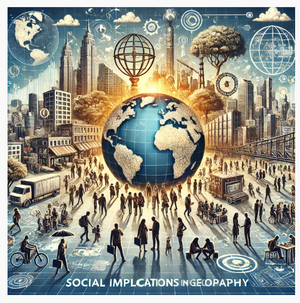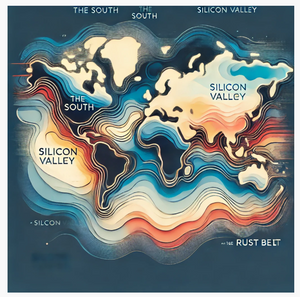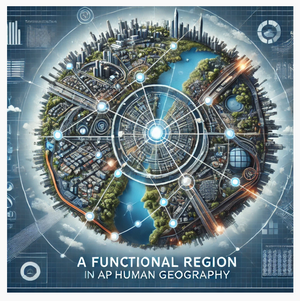Resource Use – AP Human Geography: Understanding Human Impact on the Planet
What Is Resource Use in AP Human Geography?
In AP Human Geography, resource use refers to how humans exploit natural and artificial materials to meet their needs, develop economies, and sustain societies. It includes the consumption of renewable and nonrenewable resources, as well as the effects of human activities on the environment.
Key Definitions of Resource Use:
- Natural Resource: A material found in nature that humans value, such as water, soil, or minerals.
- Sustainability: The ability to use resources in a way that does not deplete them for future generations.
- Environmental Determinism: The idea that the environment directly influences human behavior and societal development.
- Possibilism: The concept that while the environment sets certain limits, humans have the ability to adapt and modify their surroundings.
Types of Resources in Human Geography
1. Renewable Resources
Renewable resources regenerate naturally within a human lifespan. These include:
- Solar Energy – A limitless energy source used for power.
- Wind Energy – Harnessed through wind turbines.
- Forests – Trees can regrow when managed sustainably.
- Water Cycle – Naturally replenished through precipitation.
2. Nonrenewable Resources
Nonrenewable resources take millions of years to form and are finite, such as:
- Fossil Fuels (Coal, Oil, Natural Gas) – Used for energy but cause pollution.
- Minerals and Metals – Used in industry, but supply is limited.
- Groundwater in Arid Regions – Takes centuries to replenish, leading to depletion concerns.
3. Perpetual Resources
These resources are always available, regardless of human use:
- Sunlight – The most abundant source of energy.
- Tides and Ocean Currents – Constantly moving forces that can generate power.
How Resource Use Affects the Environment
Human interaction with resources significantly impacts ecosystems. Here’s how:
- Deforestation – Large-scale logging leads to biodiversity loss and climate change.
- Water Scarcity – Overuse of freshwater sources strains supply for agriculture and drinking.
- Soil Degradation – Intensive farming depletes nutrients, leading to desertification.
- Air Pollution – Burning fossil fuels releases greenhouse gases, contributing to global warming.
- Overfishing – Depletes fish populations, threatening marine ecosystems.
Sustainability and Resource Management
To balance resource use, societies implement sustainability strategies such as:
- Recycling and Reusing – Reduces waste and extends resource availability.
- Alternative Energy Sources – Reducing dependence on fossil fuels.
- Conservation Policies – Laws protecting forests, wildlife, and clean water.
AP Human Geography Exam: Key Concepts & Study Tips
To ace your AP Human Geography exam, ensure you understand:
- Examples of resource use and its impact on different regions.
- Differences between renewable, nonrenewable, and perpetual resources.
- How resource use ties into global issues like climate change and economic development.
Common AP Exam Questions on Resource Use:
-
What is a resource in AP Human Geography?
- A material that humans find valuable and use to meet their needs.
-
How does resource use affect the environment?
- Overexploitation can lead to deforestation, water shortages, and climate change.
-
What are examples of resource use in human geography?
- Logging, farming, fossil fuel extraction, and renewable energy development.
Final Thoughts on Resource Use in AP Human Geography
Resource use is a fundamental topic in AP Human Geography, linking economics, environment, and sustainability. As human populations grow, the way we manage resources will determine the future of our planet.
Recommendation:
For the best AP Human Geography study guide, check out this recommended textbook to ace your exam!




